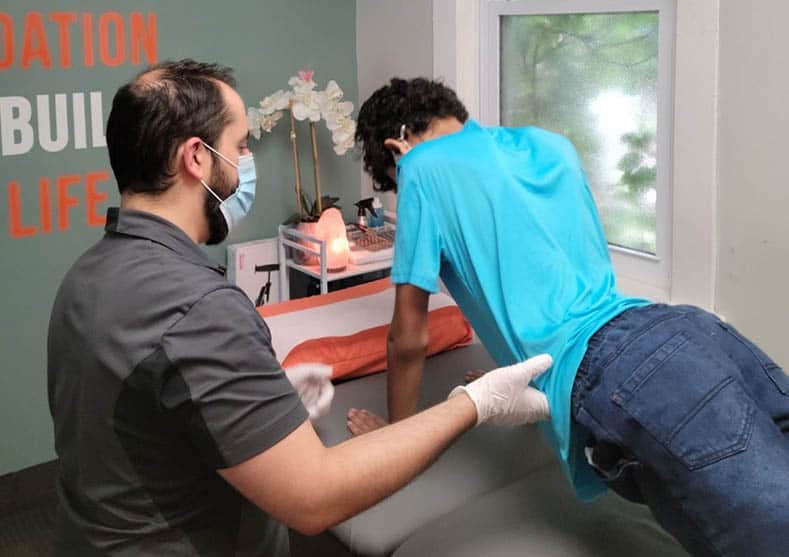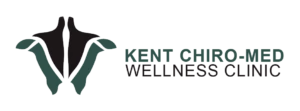Some of the most common types of physical therapy treatment include:
- Heat Therapy and Ice Therapy
Heat are frequently used to relieve pain and increase blood flow to a muscle or joint. Heat is ideally used to treat stiff joints, muscle pain, chronic shoulder pain, or muscle spasm. To reduce swelling and inflammation, ice is frequently given to critically damaged muscles or joints. Physical therapists use ice therapy for sports injuries like ankle sprains, muscle strains, red, hot, or swollen injuries, or acute pain.

- Joint Mobilization
Joint mobilization is a hands-on technique to make stiff or immobilized joints move. The physiotherapist mobilizes the joint at different speeds, depths, and amplitudes to restore normal joint movement. It is often paired with exercise to yield results.
- Laser
Low-level laser therapy has been utilized by physiotherapists for many years due to its anti-inflammatory and pain-relieving properties.
- Release of the Myofascial Tendons
Fascia is a type of connective tissue that covers or connects body parts. Physiotherapists and other healthcare providers are increasingly performing a myofascial release, a treatment focusing on the surrounding muscles of the fascia. During this treatment, a low load, long-duration stretch is applied into the myofascial complex to provide pain relief, improve function and restore muscle strength. The fascia is stretched and released by applying prolonged pressure on trigger points.
- Shockwave Therapy
Shockwave Therapy treats a range of ailments, including plantar fasciitis, tennis elbow, and shoulder tendinitis. The therapy alleviates pain alleviation and improves function.
- Ultrasound Therapy
This modality has a great impact on muscles, joints, and ligaments, and is thought to enhance circulation, tissue metabolism, tissue flexibility, and healing. Patients with arthritis, tendinitis, or muscle tension can benefit from this treatment.
- Exercises to Increase Range of Motion (ROM)
The movement of a joint from its fully flexed to fully extended position is referred to as the range of motion. The exercise program is divided into three categories: passive, active-assistance exercises, and active.
While performing passive range of motion exercises, the physical therapist moves your limb along the joint range while you remain motionless. This is commonly done if you are unable to move a limb yourself. Active-assistance exercises refer to the therapy where the physiotherapist assists the patient in completing the motion. The patient can move the limb but the physiotherapist assists to reduce discomfort or pain. Active exercises are those in which the patient performs the movement independently of the physiotherapist. Some examples of the range of motion exercises include head-tilts, shoulder rotations, and leg-lifts. The therapy is used to treat knee pain, neck pain, and further injury prevention.
- Soft Tissue Mobilization
Soft tissue mobilization, also known as therapeutic massage, can assist a patient’s muscles to relax and reduce swelling in specific regions, making it an appropriate treatment for pain associated with athletic injuries. Soft tissue massage also aids in the circulation of blood and lymph fluid, as well as the reduction of tissue swelling around inflamed joints.
- Electrotherapy
Electrotherapy is a more recent development in the field of energy-based physiotherapy. Electrical stimulation is performed by attaching electrodes to the skin in this type of treatment. The electrodes induce the muscles to shorten, which helps to avoid atrophy. It’s excellent for people who have paralysis or a limited range of motion.
- Acupuncture Ottawa
- Chiropractor Ottawa
- Custom Orthotics Ottawa
- Graston Technique Ottawa
- Head & Neck Pain Ottawa
- Low Back & Hip Pain in Ottawa
- Middle Back & Shoulder Pain Ottawa
- Physiotherapy Ottawa
- ACL Injury Treatment Ottawa
- Arthritis Pain Relief Ottawa
- Back Pain Relief in Ottawa: Your options for treatment
- Child Youth Sports Injuries & The Treatments Available Ottawa
- Chronic Pain Relief: Treatments That Can Help Ottawa
- Concussion Treatment In Ottawa: The Best Ways To Get Better Quickly
- Pain Relief for Elbows, Wrists, & Hands Ottawa
- Treatments for Balance and Gait Disorders Ottawa
- Ottawa Shockwave Therapy
- Spinal Decompression Ottawa
- Sports Physiotherapy in Ottawa
